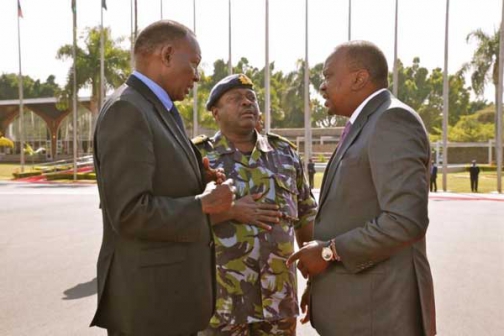×
The Standard e-Paper
Home To Bold Columnists

President Uhuru Kenyatta(right) is seen off by top Government officials, Internal Security Cabinet Secretary Joseph Nkaisery(left) and Chief of Defence Forces Samson Mwathethe(centre) as he departs to Addis Ababa. (Photo: PSCU)
Kenya Defence Forces commanders in Somalia were summoned to Nairobi on Friday evening to explain the Kulbiyow carnage as military top brass began to confront the enormity of the losses from the attack.